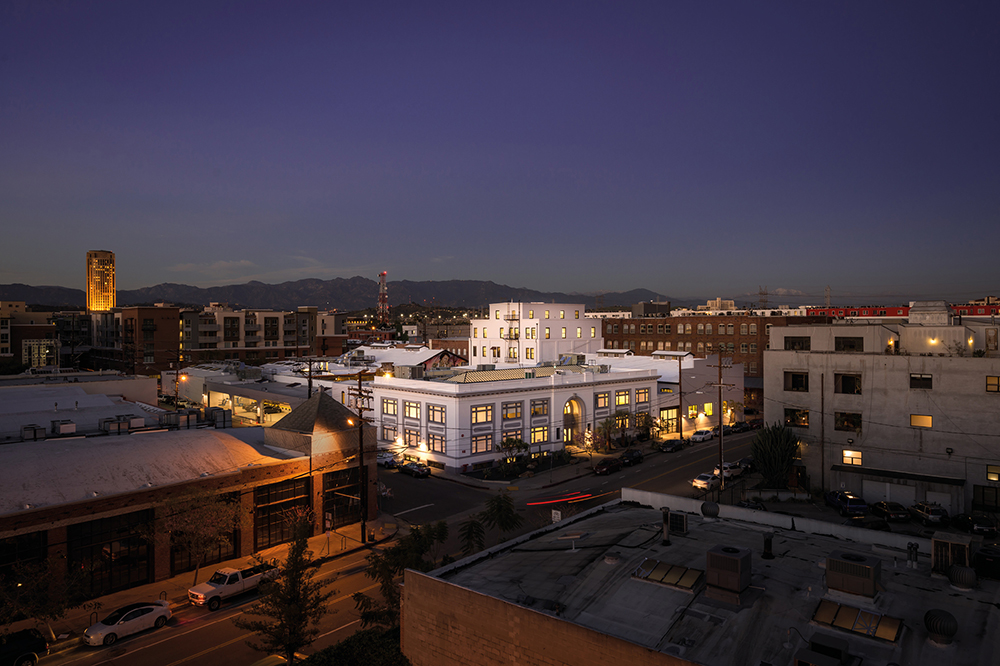From the April 2022 issue of Apollo. Preview and subscribe here.
As Los Angeles’s ascension to global art capital continues, it is worth remembering that the art scene in the city has never been as isolated and ignored as popular history would suggest. It is true that the art scene here has historically been smaller, more intimate, less centralised, less scrutinised than those in other major art capitals such New York and London. That remove from the critical centre provided artists a degree of freedom, a licence to experiment. It is an atmosphere that was both challenging and inspiring. ‘You had to really do backflips to make things happen then [in the ‘80s],’ performance artist Ron Athey told me when I interviewed him last year on the occasion of his career survey at the ICA LA. ‘I think LA’s harshness for receiving things and having no darlings in that period was also a good thing. It makes you stronger.’
Low rents and an abundance of space compared to other cities contributed to a sense of possibility. In 1981, LA started an Artist-in-Residence ordinance, which legalised live-work spaces in former industrial buildings for artists. Artists flocked to abandoned and neglected buildings in and around downtown, leading to the creation of the Arts District. In 2018, artists at one of the city’s first AIR buildings waged an unsuccessful battle against eviction after their building was purchased by a developer. The building is just a block away from the site where mega-gallery Hauser & Wirth opened its first LA location in 2016.
Athey, always something of an itinerant artist, moved to London in 2009 for six years. When he returned to LA in 2015, it was ‘like this kind of “arrived city”, for the good and bad,’ he said. The arrival of LA has been heralded nearly every year for the past four decades or so by various East Coast and art-world publications, much to the eye-rolling chagrin of Angelenos. However, the sea change that has occurred over the past 10 or 20 years seems more substantial, as the cultural groundwork laid by LACMA in 1961, followed by MOCA, the Hammer, and the Getty in the ’80s and ’90s has been built upon in rapid succession by institutions like the Broad and the ICA LA, not to mention the dozens of homegrown galleries that have sprung up, the blue-chip outposts, and the success of the Frieze and Felix art fairs. In 2011, the Getty launched its first Pacific Standard Time (PST) Initiative, a series of exhibitions that took place all over Southern California, reframing and canonising the area’s often overlooked art histories.
The ICA Los Angeles, photographed in 2017. © Dominique Vorillon

But what effect has LA’s ‘arrival’ had on the artists who are already here? Curator Paul Schimmel – who in 1992 at MOCA brought together a disparate group of artists including Mike Kelley, Lari Pittman, Raymond Pettibon, and Meg Cranston in the seminal exhibition ‘Helter Skelter: L.A. Art in the 1990s’ – is optimistic. ‘LA shouldn’t be an island nation,’ he says. ‘I believe in regionalism. You don’t want to lose a sense of place and identity, but there’s no real place for provincialism.’
For Schimmel, LA’s lack of centre is a positive characteristic. ‘I felt when I did “Helter Skelter”, and still to this day, that there’s no “there” there,’ he says, borrowing Gertrude Stein’s quotation about Oakland. Different art scenes ‘pop up everywhere. It’s fluid. The hierarchies don’t exist.’ Gallery clusters have sprung up across the city at different times, moving from Santa Monica and Venice, to Chinatown, Hollywood, the Arts District, Koreatown, etc. For better or worse, this is still a driving town, meaning even a strip-mall gallery in the Valley is only a short freeway trip away during the right time of day. Artists live everywhere, they’re not beholden to crowding into a particular neighbourhood to make their career.
Viewed through a nostalgic lens, every city has a golden age, or several golden ages, epitomised by possibility and youthful exuberance. However, reality is often messier and more complicated. ‘You asked me if I could do what I did then, in these times, and I’m not sure if what I did then is relevant now,’ Johanna Went tells me via email. Beginning in the late 1970s, Went staged transgressive, absurdist performances featuring outrageous costumes and buckets of simulated bodily fluid, set to a confrontational no wave soundtrack. She found a welcoming scene on the outskirts of the fine art world, mostly in punk clubs. ‘The thing I needed most was a community and that came to me from the clubs, I trust that brave young artists will find their way. We (artists) are like dogs we need to find our pack. I am hopeful.’
Nostalgia is subjective and what one person recalls as golden may to another be tarnished.
I reach out to Harry Gamboa Jr., a member of the seminal Chicano/a artist collective ASCO. Growing up in LA during the 1950s and ’60s, Gamboa saw little reflection of Mexican-Americans either in popular culture or the art world. In response to a LACMA curator’s statement that Chicanos didn’t make art, they joined gangs, Gamboa and two other members of ASCO spray painted their names on side of a bridge on LACMA’s campus, creating one of the group’s most iconic artworks, Spray Paint LACMA (1972). Their names were quickly painted over, but a photo of ASCO member Pattsi Valdez standing on the bridge bearing their names immortalised the moment. ASCO would have to wait almost 40 years for a serious institutional reappraisal, when LACMA mounted a retrospective of their career in 2011, as part of the first series of Pacific Standard Time shows. During that exhibition, Gamboa tells me, he was approached by fans who wanted to restore the bridge he had tagged, to which he simply replied, ‘They tore that bridge down twenty years ago.’
From the April 2022 issue of Apollo. Preview and subscribe here.



